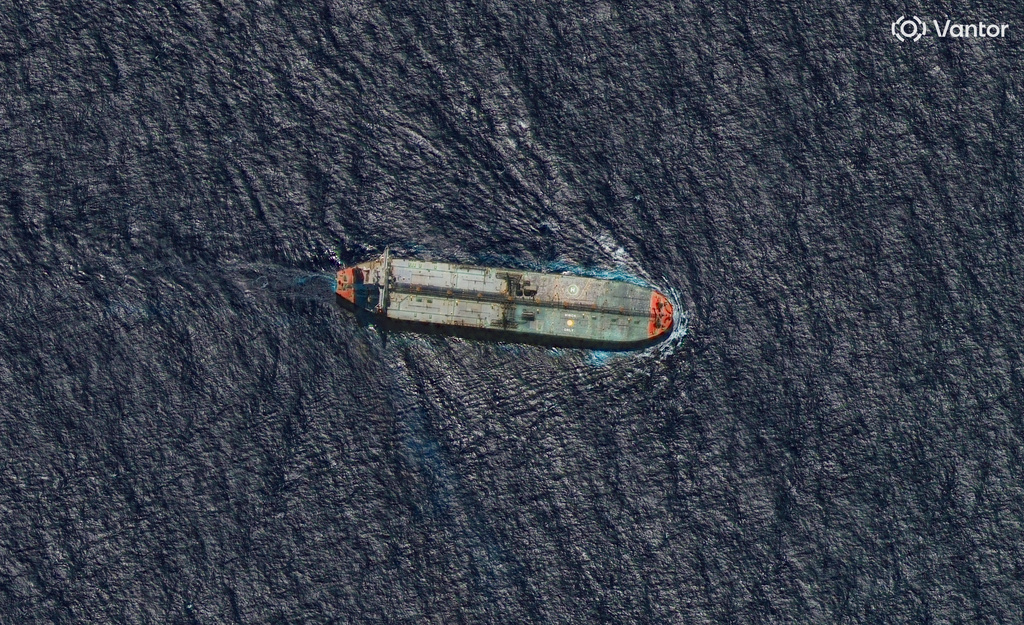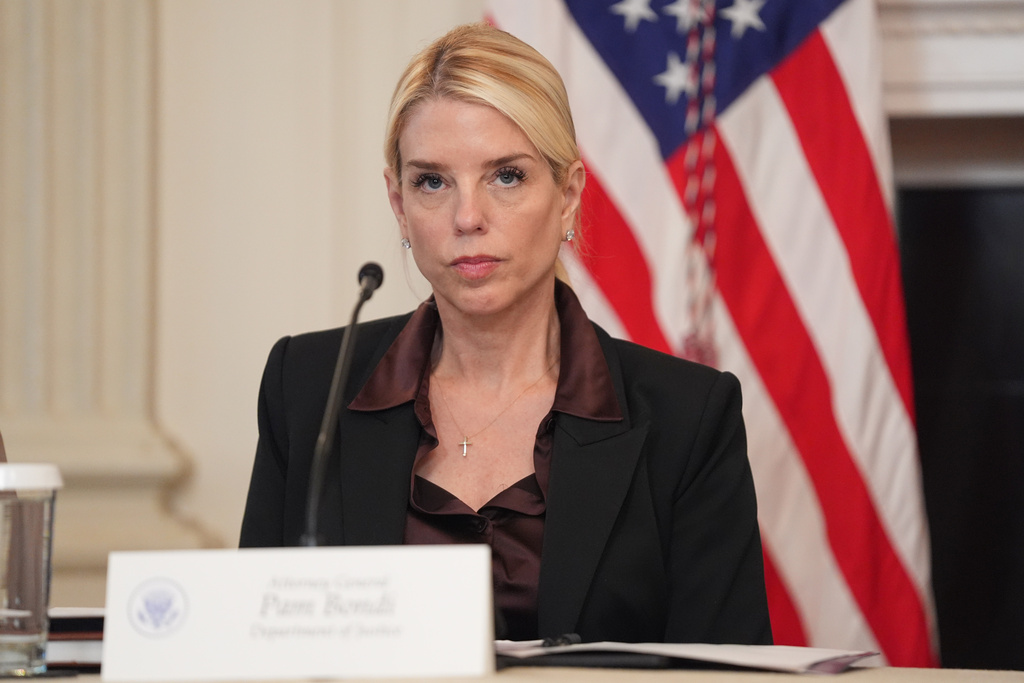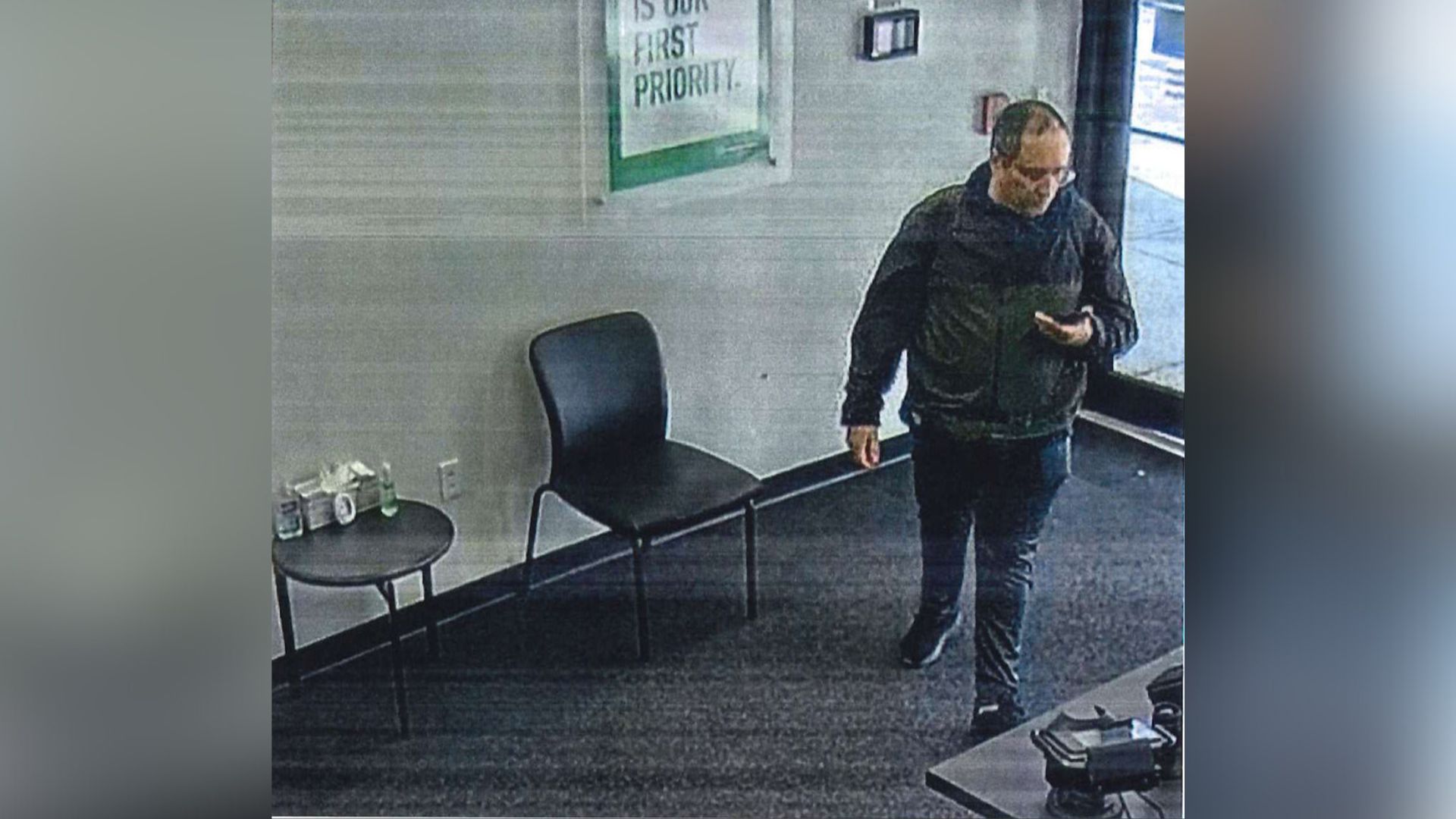Dressed in a lightweight, protective zipper-suit designed to keep dirt, insects and contaminants off his body, Dr. Michael Ketterer, a chemist, slowly lowered himself into an empty, abandoned water storage tank on a residential property near Carrizozo, New Mexico, to collect dust samples from the bottom of it.

Michael Ketterer gets ready to go down into an old water well known as a cistern in Carrizozo, New Mexico. (Zach Cusson / Scripps News)
“In an ideal world, you would have a continuous accumulation of sediment — like a layer cake,” he said, as he inspected and scooped up the dirt at the base of the narrow cistern.
Ketterer, a Northern Arizona University professor emeritus of chemistry, specializes in radioactive materials like plutonium, one of the components used by the United States to make and test its first atomic bomb in New Mexico in 1945. By analyzing dozens of soil samples, Ketterer is trying to help residents there, like Tony Ortiz, understand how plutonium might have contaminated their communities and impacted their health.
“I don’t know if I was affected, but I may have been. There’s been a lot of cancer, you know, among relatives and people that live around here,” said Ortiz, 74, who allowed Ketterer to take samples from his properties.

Tony Ortiz, 74, and his wife, Patsy Ortiz, 68, both grew up in Carrizozo, New Mexico. Tony says the Trinity test wasn't something that was talked about until people in this small community started to die from different cancers. (Zach Cusson / Scripps News)
The first atomic bomb test
Scientists detonated the first atomic bomb in July 1945 in a remote desert area in south central New Mexico, a location later nicknamed the Trinity Site.
The bomb contained “13 pounds of weapon-grade plutonium,” according to the National Park Service. “Radioactive fallout descended to the northeast over an area about 250 miles long and 200 miles wide ... (and) landed on vegetables and cattle and contaminated the water supply,” according to NPS.
People who lived in the area later reported medical problems, including various types of cancers, but they have never been eligible to apply to receive government compensation for their illnesses.
Radiation Exposure Compensation Act
“Nobody can understand [why they were excluded from compensation],” said U.S. Rep. Teresa Leger Fernández, a Democrat who represents the third congressional district of New Mexico.
“Why would you have left out the very first people who were the most vulnerable?” she said.

Tony Ortiz walks on his property that includes portions of the lava fields in Carrizozo, New Mexico, about 50 miles east of the Trinity test site. (Karen Rodriguez / Scripps News)
The Radiation Exposure Compensation Act, or RECA, was established in 1990 to provide restitution to people who suffered specific illnesses and could prove they also lived or worked in specific areas near nuclear test sites or uranium mining locations in the United States.
To date, the program has approved more than $2.6 billion in claims.
While some New Mexico uranium miners received restitution through the program, residents who said they suffered illnesses while living “downwind” of the Trinity testing site were never included. Even residents who lived in areas where the government said fallout occurred were left out of the program.
“My job isn’t to really delve into why they were left out but whether to fix it now. This was an incredible injustice,” said Leger Fernández.
The congresswoman is part of a bipartisan effort in Congress to expand RECA to include people from New Mexico and communities in other states before the program expires and stops accepting claims in June 2024.
So far, several legislative attempts to do this have failed. However last week, the U.S. Senate passed the bipartisan Radiation Exposure Compensation Reauthorization Act by a vote of 69 to 30. The bill would extend the current compensation program for another six years and expand benefits to include people in New Mexico and those in other states who were affected by nuclear fallout and other nuclear waste.
"This isn’t about a handout. This isn’t about some kind of welfare program. This is about doing basic justice by the working people of this nation, whom their own government has poisoned," said Sen. Josh Hawley, R-Mo., a sponsor of the bill, after it was passed by the Senate. "This is the day when we break the cycle of lies from the government, when we break the cycle of passing the buck and irresponsibility from the government."
The White House has also expressed support for the bill should it continue to advance: "The President believes we have a solemn obligation to address toxic exposure, especially among those who have been placed in harm’s way by the government’s actions. The Administration looks forward to working with Congress to ensure sufficient resources are made available to cover the costs of administering the expanded benefits program to ensure we can honor that obligation."
Leger Fernández told Scripps News: “I’m going to keep going back at it because now’s the time to do it. Why? Because the people who were exposed are dying without an apology and without compensation.”

Tony Ortiz watches Dr. Michael Ketterer collect soil samples from the basement of his mother's home that is over 100 years old in Carrizozo, New Mexico. (Zach Cusson / Scripps News)
Ketterer, meanwhile, said he hopes his scientific expertise helps many communities better understand the levels of contamination that might exist in their backyards.
“I have an obligation as an American who’s concerned and who has particular professional skills that are useful here. I feel like I should do what I can to help New Mexicans understand the plutonium in their environment that comes from the Trinity test,” he said.
Government and other studies
In 2020, the National Cancer Institute published results of a study examining radiation exposure and cancer in New Mexico.
According to the report, researchers conducted the investigation “in response to longstanding New Mexico Community concerns about the possible harmful effects of nuclear testing” and at the request of congressional leaders.
“The researchers concluded that only in small geographic areas immediately downwind of the detonation site were the exposures substantially higher than naturally occurring background radiation,” the report said.
A Princeton University study published in 2023 suggested the fallout area from the Trinity test may have been much wider than initially believed.
“The new model shows the nuclear explosions carried out in New Mexico and Nevada between 1945 and 1962 led to widespread radioactive contamination, with Trinity making a significant contribution to exposure in New Mexico, in neighboring states, and reaching 46 of the 48 contiguous United States as well as Canada and Mexico,” the Science and Global Security study reported.
What the chemist found
In July of 2023, Ketterer took dozens of soil samples near New Mexico highways in the areas where the U.S. government reported Trinity test fallout. While his analysis confirmed what the government reported, Ketterer said he believed plutonium from the Trinity test may have been dispersed beyond those areas, too.
“It seems like there is a large area of the state of New Mexico that essentially has to have some breadcrumbs from this test,” he said.

Dr. Michael Ketterer vacuums up dust samples from the attic of Tony Ortiz's mother's house in Carrizozo, New Mexico. (Zach Cusson / Scripps News)
In September of 2023, Ketterer collected additional samples from the crevices of an old school, in a residential home attic, at a church, at a children’s park, in a lava field, and from other natural sites in corridors about 60 miles south of the explosion site.
The area, called the Tularosa Basin, is home to many community members who have expressed concerns about ongoing health problems.
“I didn’t feel like it had been adequately studied,” Ketterer told Scripps News. “My agenda is to reveal the truth.”
After collecting more than 200 bags of dust and dirt, Ketterer said he was surprised by his initial results, which showed very low levels of plutonium attributable to the Trinity test.
“We can say that it’s there, but it’s not the dominant source of plutonium,” he said. “There’s a lot more samples to take, and there’s additional work that’s needed to be done."
Ketterer said the findings — which have not been peer reviewed — may provide some relief for community members.
“I think what it means for the community is that they can be relieved that I’m not finding obvious signs of extreme plutonium contamination,” he said. “I think my answer is probably going to be pretty unsatisfying to the community because I’m not really providing them with an explanation for, you know, why they’re seeing all these negative health effects.”
He emphasized the results are “very preliminary.”
“There’s still a lot more to find, and I think there’s still unanswered questions, and there will be more surprises too,” he said.

Dr. Michael Ketterer collects dirt samples from the Valley of Fires lava fields near Carrizozo, New Mexico. (Zach Cusson / Scripps News)
Health effects
Scripps News reached out to Dr. Jonathan Samet, the former dean of the Colorado School of Public Health.
He has spent years studying the risks of radiation exposure and its effects on people's health.
“In general, fortunately, most people don’t have levels of plutonium exposure that should give them, I think, undue pause,” he said.
Samet said the concern for an average person would come when plutonium is inhaled or otherwise enters the body.
“We have very few populations where we’ve actually seen that people exposed to plutonium are at risk for cancer,” he said.
While it is difficult to simplify how plutonium affects one’s body, Samet whittled it down to this: “The more that people are exposed ... the greater the risk.”
“I wish that science could provide a sharp, clear answer,” he said. “I understand the basis for concern, and I think if I can offer reassurance, it’s that we don’t think that levels of risk have been elevated to a point at which most people should be worried about developing cancer because of where they live ... I recognize and understand that there’s a huge range and how we all perceive risk.”
For Tony Ortiz, the results from Ketterer’s testing were a relief. Ketterer found all but one of the samples from his property had low amounts of plutonium traceable to the Trinity test.
Ortiz, who worried for his grandchildren’s future, said he is happy to have some closure.
“A lot more research is needed,” he said. “Maybe something will come of all this.”

Tony Ortiz shows Scripps investigative reporter Lori Jane Gliha his family photos in Carrizozo, New Mexico. (Zach Cusson / Scripps News)










